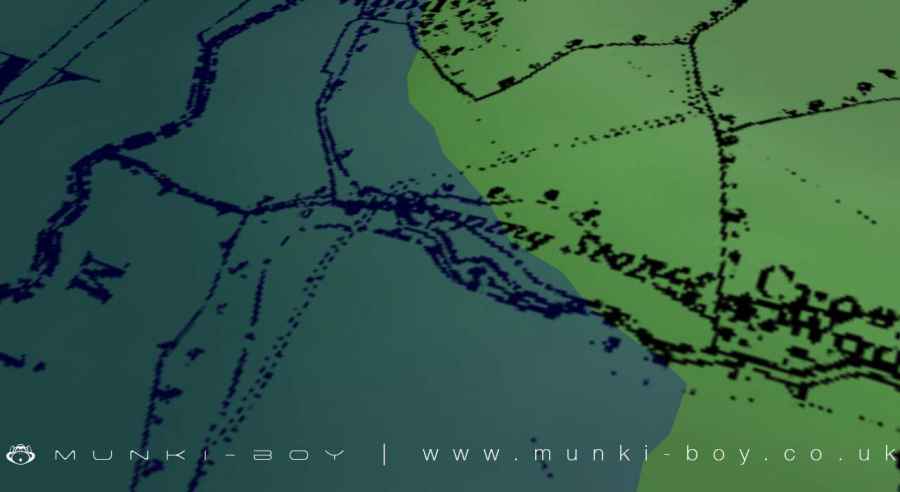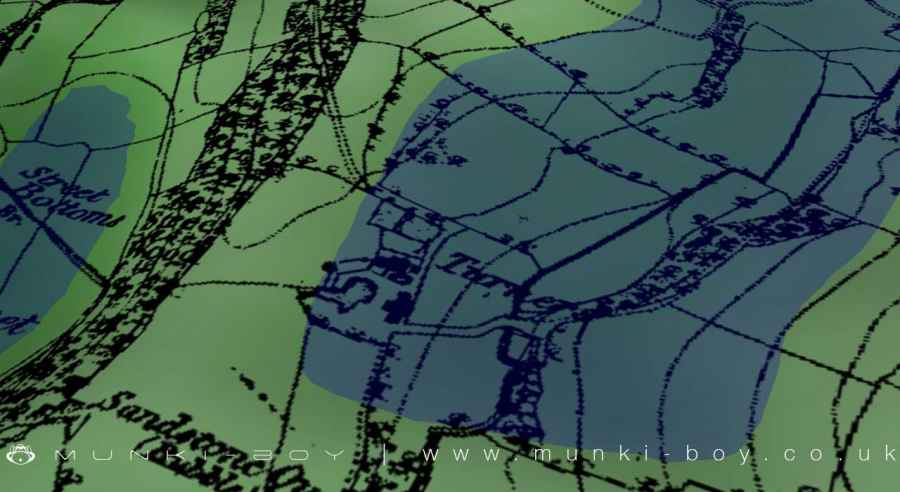
Rivington Reservoirs Model by munki-boy
Rivington Reservoirs What Lies Beneath
The Rivington Reservoirs and the drowned Yarrow Valley
This is the story of the Yarrow Valley in Lancashire where a peaceful rural area was flooded to construct several large reservoirs between 1850 and 1857. The goal of the project is to examine the landscape that was lost.
During the industrial revolution many formerly small towns in Northwest UK underwent massive and rapid population expansion. This was due to an influx of people seeking work in the cotton industry as it developed the use of steam powered machines, increasing productivity exponentially.
It was soon found that typical towns such as Bolton and Chorley to the north of Manchester could not supply enough fresh water for the rapidly growning population and the steam powered machines at which they worked. Small reservoirs that served the towns were not large enough or positioned well by modern standards.
A brave and groundbreaking plan was made to construct much larger reservoirs by damming and then flooding a valley of a suitable position and shape. This is a story that was later repeated in several areas of the UK and continues to modern times.
The first of this type of project was the flooding of the Yarrow Valley in the West Pennines close to Chorley and the small village of Rivington in Lancashire. The project itself was a massive success that created three large lakes and a smaller - but still substantial - fourth. Today the Rivington Lakes are a favourite local beauty spot, recreation area, wildlife haven and water source.
Growing up in the area there were many tales, which are often said about other such places and should really be thought of as “urban myths”, but they are widely believed as true. Stories of drowned villages and church spires that emerge from the lakes during summer droughts when the water levels are low.
It is my intention to use maps and my specially created 3D terrain model to illustrate exactly what was lost in the flooded valley why those tales are in fact for the most part myths.
It is actually already possible to see what was lost in the construction of the reservoirs by comparing the 1849 map to a modern map, but I thought something that combines reservoir water with the old map and a profile of the topography would illustrate things much better. So, I carefully constructed a 3D surface using 3D software that models the shape of the land based on surveyed height measurements. Being very familiar with these places in ‘real life’, the model looks pretty good to me.
I then draped the old C1849 map over the surface to help us see where stuff was back in the day.
I also added a bit of colour based on the height of the land surface and finally added a plane of “water” to represent the mean (average) level of water in the reservoirs as they are seen in modern times.
This already gives a good illustration of why the valley was chosen, aside from a few sections of embankment which are not much by today’s standards but a major engineering feet when they were created. The water is well contained.
Note the thick black line roughly central to the valley and water, this was the course of the little Yarrow River that once flowed down the valley, and must historically be the creator of the valley by erosion.
You can also see in two places what looks like a bridge dividing the long lakes which are embankments and roadway that seperates the water into three long lakes. Also the smaller “Yarrow Reservoir” to the right slightly, at the rear of the image.
Next, I will ‘zoom-in’ on various points-of-interest that can be seen in the 3D map to see what really was flooded to construct the lakes.
As it turns out, surprisingly few dwellings were flooded when the reservoirs were created, one casualty was this section of the main Chorley to Bolton road and associated buildings. The section of road was moved, that is to say, reconstructed.
Lady Hall
Lady Hall, a grand old propery was demolished as it lay right on the edge of the reservoir area and although it might not have been flooded fully, the reservoir has a stone edge to help contain the water and resist erosion and the old hall was causing an obstruction.
The Stepping Stones
Aside from the lost dwellings it is noted that the flooding of the valley affected people in other ways. Apparently the locals were most dissapointed to lose a favourite walking route taking in what was said to be beautiful countryside and stepping stones over a stream. Nothing remains today but the water of the lakes but we can find the site of the stepping stones here on the old map, it is the only place were stepping stones are shown so it must be the place. The route of a track is also shown which must be the route people took over a tributary stream leading down into the valley. I expect the old stream bed and stepping stones must remain below the water. Walker Houses and the Black-a-moors Head
A small hamlet known as Walker Houses was also lost, it is shown here just within the southern end of the Upper Rivigton Reservoir. On the opposite side was the Black-a-moors Head or “Black Lad” as the local inn was know. This was re-built just above the shoreline but this too is now long gone.
The gap between the water being a man-made causeway were the modern road crosses between the two reservoirs.
Lister Mill
The remains of Lister Mill can actually be seen today at the very edge of the Anglezarke Reservoir, at the northern end of the three large lakes. There is a nature trail route and a decent footpath follows the shoreline for some distance, where stone rubble can be seen, it is mentioned elsewhere that old millstones can be seen when the water level is low. Lister Mill was in fact a corn mill and would have used millstones to grind the corn.
Turner’s
The smaller Yarrow Reservoir, located next to the three larger lakes also contains the ruins of several dwellings. The relatively large complex of Turner’s Farm can be seen. This part of the reservoir has massive man-made embankments to contain the water and I have not seen any sign of this ruin, I assume the contstruction of the embankments destroyed the remains.
Alance
Perhaps the largest disturbance to dwellings caused by the construction of the reservoirs was the small village of Alance, located within the bounds of the Yarrow Reservoir. The bridge shown in the old map was actually replaced by a new bridge, also named Alance Bridge, further up away from the water spanning the brook which leads into the reservoir. The road leading down to the bridge is known locally as “Engine Brow” as a steam powered engine was located there to assist in the construction of the reservoirs and was a novelty to people in that time before such things were common.
Created: 27 November 2016 Edited: 29 November 2023












